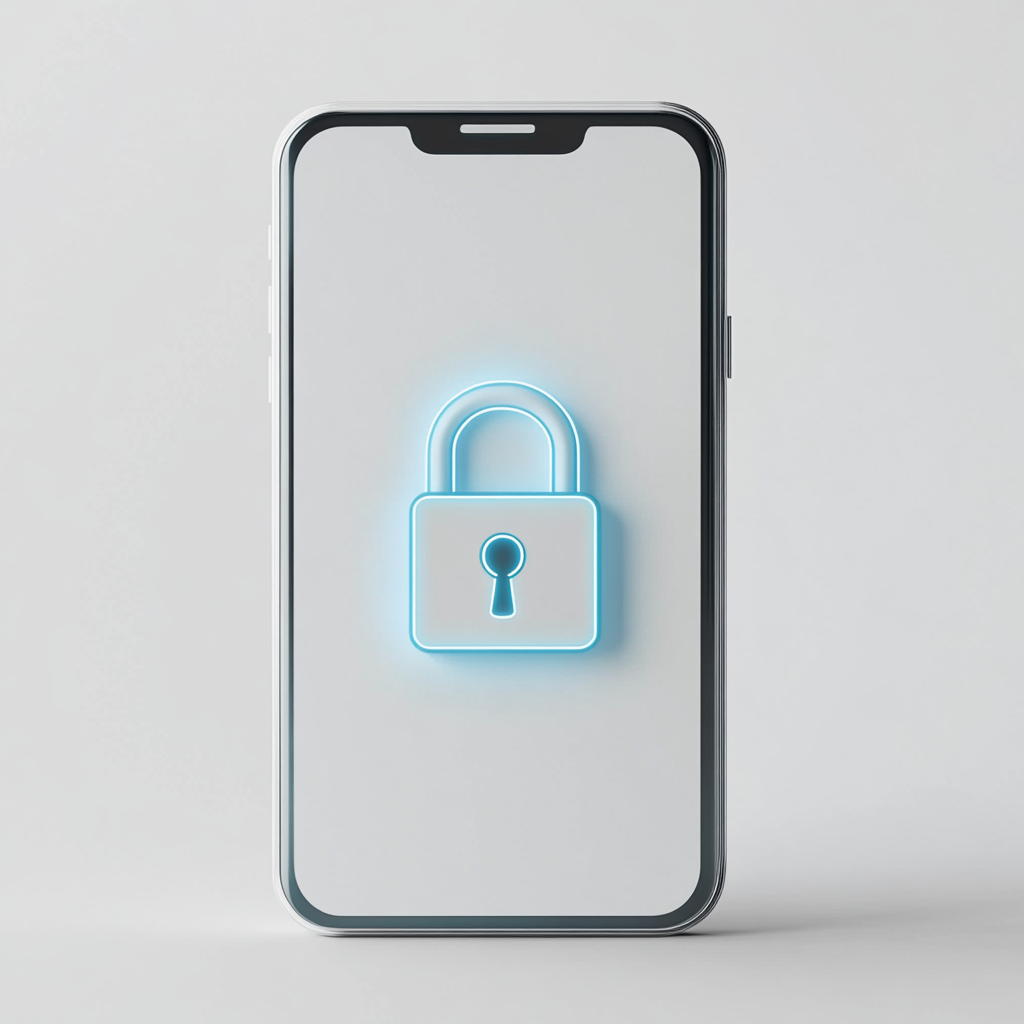
Mobile app authentication faces ongoing challenges as password-based systems create friction for users and security concerns for developers. Traditional authentication methods often result in forgotten passwords, vulnerable SMS codes, and security breaches that expose user credentials. Major companies including Apple, Google and Uber have started implementing passkeys as a direct response to these persistent authentication challenges, offering a practical alternative that eliminates passwords while strengthening security.
What are Passkeys and Why Do They Matter
Passkeys represent a fundamental reimagining of digital authentication. Unlike traditional passwords that rely on shared secrets stored on servers, passkeys leverage advanced public key cryptography to create a more secure authentication ecosystem.
When you register a passkey with an application, your device generates a unique cryptographic key pair specifically for that account. The public key gets stored on the application's server, while the private key remains securely locked on your device's password manager. This separation creates an inherently more secure system where compromising the server doesn't expose your authentication credentials.
The authentication process is remarkably simple. Instead of typing a password, you simply unlock your device using biometric sensors like fingerprint or facial recognition, a PIN, or pattern. This gesture authorizes the passkey and grants you access to your account.
Why Passkeys are Better than Traditional Authentication
Protection Against Credential stuffing and Brute Force Attacks
Traditional authentication methods are vulnerable because passwords are stored on servers, making them target for attackers. Passkeys eliminate this vulnerability entirely. Each key pair is unique and mathematically linked, making credential stuffing and brute force attacks impossible. Even if attackers gain access to the public key stored on a server, they cannot derive the private key stored on your device.
Phishing Resistance Built Into the Design
One of the most compelling features of passkeys is their inherent resistance to phishing attacks. Each passkey is cryptographically tied to the specific application or website where it was created. Your device will only use a passkey for its intended destination, dramaticaly reducing the likelihood of accidentally sharing credentials with malicious sites.
Zero Knowledge Architecture
The beauty of the passkey system lies in what servers don't know. Your device never shares private keys or biometric data with the application. If a server gets compromised, your passkey remains secure because the critical authentication component stays on your device.
How Passkeys Work: The technical Foundation
The passkey ecosystem operates on the WebAuthn specification, a web standard developed by the W3C and FIDO Alliance that defines secure authentication protocols for web applications. This specification standardizes interactions between authenticators (your device) and relying parties (applications). This standardization enables cross-device functionality, allowing a passkey created on your Android to authenticate you on a Windows desktop computer.
The Registration Process
The registration flow involves several coordinated steps between your device and the application
- Initial Request: The application client requests credential creation options from the server, including user account information and unique challenge puzzle to prevent replay attacks which is where an attacker intercepts a network connection.
- Key Generation: Your device's authenticator prompts for biometric or PIN verification, then generates a new public-private key pair upon successful authentication.
- Attestation: The authenticator creates an attestation statement container information about the new passkey and returns it to the client.
- Server Storage: The application server validates the attestation, confirms the passkey was generates in a trusted environment, and stores the public key linked to your user account.
The Authentication Process
Signing in with passkeys follows a similar but streamlined process:
- Challenge Request: The client requests authentiction options from the server, including a unique challenge which is a sort of puzzle.
- User Verification: Your device prompts for biometric or PIN verification, then generates an assertion statement.
- Signature Validation: The server receives the assertion statement , which includes a signature created with your private key, and validates it using the stored public key.
- Access Granted: If the signature verification succeeds, the server confirms the authentication and grants success.
Cross-Platform Compability and Device Support
The WebAuthn standard ensures consistent implementation across different platform, though device support varies. As of 2023, major browsers and operating systems are rapidly expanding their passkey capabilities:
- IOS/macOS: Full support across Safari and third-party browsers
- Android: Native support in Chrome and compatible apps
- Windows: Support through Windows Hello and compatible browsers
- Linux: Growing support through various password managers
This expanding compatibility matrix means users can expect increasingly seamless experiences across their devices.
Managing Your Passkeys: Control and Flexibility
Modern passkey implementations prioritize user control. You can view and manage your passkeys through application settings, giving you complete visibility into which devices have authentication access.
When you delete a passkey from an application, it removes the public key from the server. However, you'll also need to delete the corresponding private key from your device's password manager to complete the process. This two-step approach ensures complete credentials removal while maintaining security.
Current Challenges and the Path Forward
Platform Standardization
While passkey adoption is accelerating, implementation differences across browsers and operating systems create complexity. The variety of potential use cases significantly increases technical requirements for developers building passkey support.
User Education and Adoption
The learning curve for both developers and users remains a significant challenge. Many users don't understand what passkeys are, leading to lower engagement with passkey authentication flows. This knowledge hap requires throughful onboarding experiences and clear communication about the benefits.
Gradual Migration Strategy
Organizations implementing passkeys must design elegant fallback mechanisms. Since passkey adoption isn't universal, users need alternative authentication methods during the transition period. This requires careful balance between encouraging passkey adoption and maintaining accessibility.
Industry Leadership and Future Outlook
Major technology companies are driving passkey adoption through coordinated efforts. Apple, Google and Microsoft announced joint initiatives to expand passkey support across their platforms, while companies like Uber are implementing comprehensive passkey systems to enhance user activity.
The initial rollout data shows promising security improvements, though adoption rates remain low during early phases. Organizations are experimenting with post-authentication prompts and improved onboarding flows to increase registration success rate
Implementation Strategies for Modern Applications
Progressive Enhancement Approach
Smart implementation involves introducing passkeys as an enhancement rather than a replacement. Users can register passkeys after traditional authentication, creating a smooth transition path while building familiarity with the technology.
Data-Driven Optimization
Successful passkey implementation requires careful analysis of user interaction patterns. Understanding where users struggle in the registration or authentication flow enables targeted improvements to the experience.
Integration with Existing Security Infrastructure
Passkeys work best when integrated thoughtfully with existing authentication systems. This might involve maintaining legacy authentication options while encouraging passkey adoption through improved user experiences.
Building the Passwordless Future
The shift toward passkey authentication represents more than just a technological upgrade, it's a fundamental reimagining of how we approach digital security. By combining strong cryptographic foundations with intuitive user experiences, passkeys address the core vulnerabilities that have plagued password-based systems for decades.
Organizations ready to embrace this future need partners who understand both the technical complexity and user experience challenges involved in implementing modern authentication systems. Whether you're building a new application or modernizing existing infrastructure, the transition to passkey authentication requires careful planning and expert execution.
The passwordless future isn't just a possibility, it's an inevitable evolution toward more secure and user-friendly digital experiences. The question isn't whether to adopt passkeys, but how quickly you can implement them effectively.
Ready to implement cutting-edge authentication solutions in your applications? At DETL, we specialize in developing secure, user-friendly mobile and web applications that leverage the latest authentication technologies. Our experienced development team can help you navigate the complexities of modern security implementation while creating exceptional user experiences. Let's build the future of digital authentication together.




